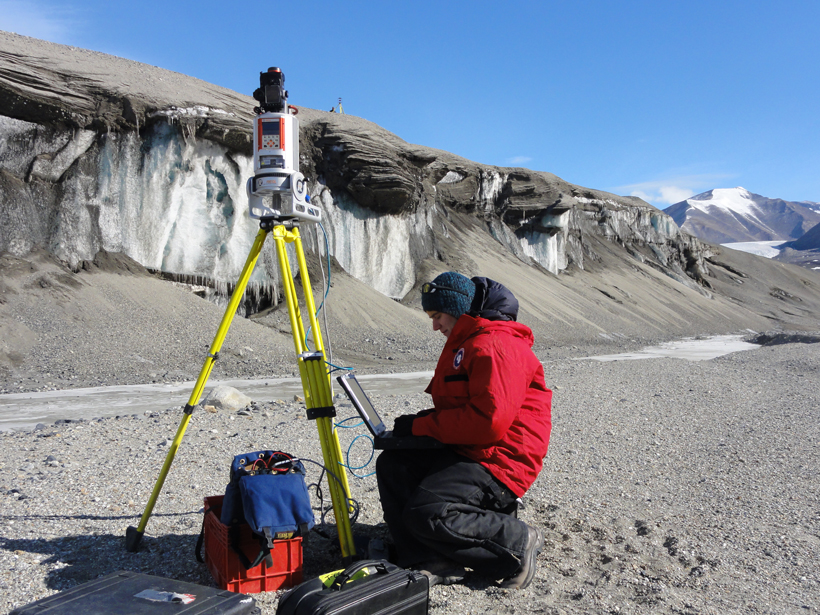The study of Earth’s ice sheets involves a variety of in situ, ground-based, airborne, and satellite instrumentation. This breadth means that many scientists are unfamiliar with the full scope of available polar technologies, which are often complementary to their own research.
Therefore, a workshop was held last fall in Baltimore, Md., to bring together scientists and engineers to discuss these technologies. The workshop sought to identify a means of communicating instrumentation capabilities for polar glaciological and geophysical research to the broader community.
The workshop was organized into sessions based on various technologies (e.g., radar, seismology, etc.) and platforms (e.g., ground based, airborne, or space based). A valuable outcome of the workshop was the development of “A Summary of Current Instrumentation for Polar Glaciology and Geophysics Research,” a 40-page document detailing the technologies that were presented during the meeting. This document is intended to assist researchers in the preparation of Arctic and Antarctic proposals by informing those new to polar science of current technological capabilities.
This document is also intended to assist scientists during the data analysis and publication phases by linking them to scientists with complementary data sets. This document and other information associated with the meeting are available on the workshop website.
Meeting discussions were often unique to specific instruments, but several common themes emerged:
- Communication of concentrated logistics. Large surveys often require deep-field logistics, and there are opportunities to benefit from synergistic research activities through coordination. The U.S. Ice Drilling Program and the Transantarctic Mountains Camp were cited as excellent models of community-driven decision making. Participants concluded that information about upcoming large polar surveys should be disseminated through Web-based geographic information systems (GIS; e.g., Operation IceBridge Planning Tools) to allow researchers to coordinate logistics with minimal additional cost.
- Instrument weight and size. Researchers want both sufficient power to meet operational requirements and lightweight batteries to reduce logistical costs. Participants concluded that a transition from lead-acid batteries to lithium-based batteries would meet these requirements. Miniaturization of airborne instruments offers the opportunity to increase flight range and facilitate future integration into unmanned aerial systems.
- Data archiving and discovery. Data archiving is expensive. Workshop participants identified preferred established data formats (e.g., HDF5 and SEG-Y) and archiving centers (e.g., the National Snow and Ice Data Center). For data discovery, attendees recognized the utility of modern GIS applications and agreed that the combination of uniformly archived data and suitable data discovery tools should accelerate scientific discovery.
- Communication of available instrumentation. To update workshop documents as new technologies emerge, participants concluded that a regular polar instrumentation session should be convened each year at the American Geophysical Union’s Fall Meeting.
The workshop was jointly supported by the National Science Foundation and NASA.
—Kelly M. Brunt, Earth System Science Interdisciplinary Center, University of Maryland, College Park; and Cryospheric Sciences Laboratory, NASA Goddard Space Flight Center, Greenbelt, Md.; email: [email protected]; and Joseph A. MacGregor, Institute for Geophysics, The University of Texas at Austin, Austin
Citation: Brunt, K. M., and J. A. MacGregor, What instruments are available for polar studies?, Eos, 96, doi:10.1029/2015EO026855. Published on 3 April 2015.
Text © 2015. The authors. CC BY-NC 3.0
Except where otherwise noted, images are subject to copyright. Any reuse without express permission from the copyright owner is prohibited.

